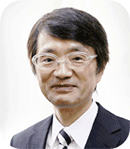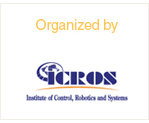
Plenary Lecture I: October 14 (WED), 11:00~12:00
Karl Henrik Johansson
Professor, Electrical Engineering Director, ACCESS Linnaeus Centre
KTH Royal Institute of Technology, Sweden
Cyber-secure Control Systems
Abstract: Cyber-attacks on critical infrastructures are of growing societal concern.
Several malicious attacks have been reported over the last few years and in many cases they have targeted control systems. The increasing use of off-the-shelf software and hardware components and open communication networks makes networked control systems vulnerable to cyber-attacks. As the cyber and physical components of these systems are tightly interconnected, traditional IT security focusing on the cyber part does not provide appropriate solutions. In this talk, we will discuss how to model, analyze and design cyber-secure networked control systems. We will introduce an adversary modeling framework and use it for quantifying cyber-security of control systems by means of constrained optimization problems. An attack space defined by the adversary¹s model knowledge, disclosure, and disruption resources is presented. It is shown that attack scenarios corresponding to denial-of-service, replay, zero-dynamics, and bias injection attacks can be analyzed using this framework. Applications to power networks and process industry will be used to illustrate the attack scenarios, their consequences, and potential countermeasures.
Biography: Karl Henrik Johansson is Director of the ACCESS Linnaeus Centre and Professor at the School of Electrical Engineering, KTH Royal Institute of Technology, Sweden. He is a Wallenberg Scholar and has held a six-year Senior Researcher Position with the Swedish Research Council. He is also heading the Stockholm Strategic Research Area ICT The Next Generation. He received MSc and PhD degrees in Electrical Engineering from Lund University. He has held visiting positions at UC Berkeley (1998-2000) and California Institute of Technology (2006-2007). His research interests are in networked control systems, hybrid and embedded system, and applications in transportation, energy, and automation systems. He has been a member of the IEEE Control Systems Society Board of Governors and the Chair of the IFAC Technical Committee on Networked Systems. He has been on the Editorial Boards of several journals, including Automatica, IEEE Transactions on Automatic Control, and IET Control Theory and Applications. He is currently on the Editorial Board of IEEE Transactions on Control of Network Systems and the European Journal of Control. He has been Guest Editor for special issues, including two issues of IEEE Transactions on Automatic Control. He was the General Chair of the ACM/IEEE Cyber-Physical Systems Week 2010 in Stockholm and IPC Chair of many conferences. He has served on the Executive Committees of several European research projects in the area of networked embedded systems. He received the Best Paper Award of the IEEE International Conference on Mobile Ad-hoc and Sensor Systems in 2009 and the Best Theory Paper Award of the World Congress on Intelligent Control and Automation in 2014. In 2009 he was awarded Wallenberg Scholar, as one of the first ten scholars from all sciences, by the Knut and Alice Wallenberg Foundation. He was awarded an Individual Grant for the Advancement of Research Leaders from the Swedish Foundation for Strategic Research in 2005. He received the triennial Young Author Prize from IFAC in 1996 and the Peccei Award from the International Institute of System Analysis, Austria, in 1993. He received Young Researcher Awards from Scania in 1996 and from Ericsson in 1998 and 1999. He is a Fellow of the IEEE.
Biography: Karl Henrik Johansson is Director of the ACCESS Linnaeus Centre and Professor at the School of Electrical Engineering, KTH Royal Institute of Technology, Sweden. He is a Wallenberg Scholar and has held a six-year Senior Researcher Position with the Swedish Research Council. He is also heading the Stockholm Strategic Research Area ICT The Next Generation. He received MSc and PhD degrees in Electrical Engineering from Lund University. He has held visiting positions at UC Berkeley (1998-2000) and California Institute of Technology (2006-2007). His research interests are in networked control systems, hybrid and embedded system, and applications in transportation, energy, and automation systems. He has been a member of the IEEE Control Systems Society Board of Governors and the Chair of the IFAC Technical Committee on Networked Systems. He has been on the Editorial Boards of several journals, including Automatica, IEEE Transactions on Automatic Control, and IET Control Theory and Applications. He is currently on the Editorial Board of IEEE Transactions on Control of Network Systems and the European Journal of Control. He has been Guest Editor for special issues, including two issues of IEEE Transactions on Automatic Control. He was the General Chair of the ACM/IEEE Cyber-Physical Systems Week 2010 in Stockholm and IPC Chair of many conferences. He has served on the Executive Committees of several European research projects in the area of networked embedded systems. He received the Best Paper Award of the IEEE International Conference on Mobile Ad-hoc and Sensor Systems in 2009 and the Best Theory Paper Award of the World Congress on Intelligent Control and Automation in 2014. In 2009 he was awarded Wallenberg Scholar, as one of the first ten scholars from all sciences, by the Knut and Alice Wallenberg Foundation. He was awarded an Individual Grant for the Advancement of Research Leaders from the Swedish Foundation for Strategic Research in 2005. He received the triennial Young Author Prize from IFAC in 1996 and the Peccei Award from the International Institute of System Analysis, Austria, in 1993. He received Young Researcher Awards from Scania in 1996 and from Ericsson in 1998 and 1999. He is a Fellow of the IEEE.

Plenary Lecture Ⅱ: October 14 (WED), 15:20~16:20
Peng Shi
Professor, School of Electrical and Electronic EngineeringUniversity of Adelaide, Australia
Analysis and Design on Dynamical Systems with Hybrid Structure
Abstract: A large class of dynamical systems has variable structures subject to deterministic or random changes, which may result from the abrupt phenomena such as component and interconnection failures, parameters shifting, tracking, and the time required to measure some of the variables at different stages. Systems with this character may be modelled as hybrid ones, that is, to the continuous state variable, a discrete variable called the mode, or operating form, is appended. The mode describes the changes or random jumps of the system parameters and the occurrence of discontinuities. On the other hand, in order to control the behaviour of a system, we should capture the system's salient features in a mathematical model. Indeed, any model of practical systems almost always contains some type of uncertainty. So the modelling and design should take into account the uncertainty inherent to a model of the system in order to maintain stability and performance specifications in the presence of these uncertainties. In this talk, the nature of hybrid dynamical systems will be explored, and some design techniques for such systems with uncertainties will be presented.
Biography: Peng Shi received the BSc degree in applied mathematics from Harbin Institute of Technology in 1982; the MSc degree in systems engineering from Harbin Engineering University in 1985, the PhD degree in electrical engineering from the University of Newcastle, Australia in 1994; and the PhD degree in mathematics from the University of South Australia in 1998. He was awarded the degree of Doctor of Science by the University of South Wales in 2006.
Dr Shi is a professor at the University of Adelaide, Australia. He was a professor at Victoria University, Australia; a professor at the University of South Wales; a senior scientist in the Defence Science and Technology Organisation, Australia; and a lecturer and post-doctorate at the University of South Australia. He has been an editorial board member for a number of journals, including Automatica; IEEE Transactions on Automatic Control; IEEE Transactions on Circuits and Systems-I; IEEE Transactions on Cybernetics; IEEE Transactions on Fuzzy Systems; and IEEE Access. He is a Fellow of IEEE, IET and IMA; and a member of College of Expert, Australian Research Council. His research interests include systems and control, computational intelligence, and operational research.
Biography: Peng Shi received the BSc degree in applied mathematics from Harbin Institute of Technology in 1982; the MSc degree in systems engineering from Harbin Engineering University in 1985, the PhD degree in electrical engineering from the University of Newcastle, Australia in 1994; and the PhD degree in mathematics from the University of South Australia in 1998. He was awarded the degree of Doctor of Science by the University of South Wales in 2006.
Dr Shi is a professor at the University of Adelaide, Australia. He was a professor at Victoria University, Australia; a professor at the University of South Wales; a senior scientist in the Defence Science and Technology Organisation, Australia; and a lecturer and post-doctorate at the University of South Australia. He has been an editorial board member for a number of journals, including Automatica; IEEE Transactions on Automatic Control; IEEE Transactions on Circuits and Systems-I; IEEE Transactions on Cybernetics; IEEE Transactions on Fuzzy Systems; and IEEE Access. He is a Fellow of IEEE, IET and IMA; and a member of College of Expert, Australian Research Council. His research interests include systems and control, computational intelligence, and operational research.

Plenary Lecture Ⅲ: October 15 (THU), 11:00~12:00
Jay A. Farrell
Professor, Department of Electrical and Computer EngineeringUniversity of California, Riverside, USA
Precision Mapping and Vehicle State Estimation for Autonomous Highway Vehicles
Abstract: Autonomous and wirelessly connected vehicles face various challenges before effective and publicly acceptable deployment. Key amongst these challenges is accurate and reliable awareness of world interactions. Awareness arises both from onboard sensors and from ubiquitous communication between vehicles and infrastructure. Safety and coordination necessitate “where-in-lane” (i.e., decimeter accuracy) knowledge of vehicle position (and state) relative to other vehicles and the environment. This presentation will discuss the role of control and systems theoretic methods related to practical autonomous vehicle applications, particularly as they relate to automated construction of precise feature maps and reliable real-time navigation (i.e., position and state estimation). Both applications require reliable and automated data fusion from various sensor modalities: LIDAR, camera, global navigation satellite systems, inertial measurements, etc. The presentation will survey and present modern methods for roadway feature mapping and vehicle state estimation.
Biography: Jay A. Farrell is a Professor and two time Chair of the Department of Electrical and Computer Engineering at the University of California, Riverside. He has served the IEEE Control Systems Society (CSS) on the Board of Governors for two terms (`03-`06, `12-`14), as Vice President Finance and Vice President of Technical Activities, as General Chair of IEEE CDC 2012, and as President in 2014. He was named a GNSS Leader to Watch for 2009-2010 by GPS World Magazine in May 2009 and a winner of the Connected Vehicle Technology Challenge by the U.S. Department of Transportation`s (DOT`s) Research and Innovative Technology Administration in July 2011. He is a Fellow of the IEEE, a Fellow of AAAS, a Distinguished Member of IEEE CSS, and author of over 200 technical publications. He is author of the book "Aided Navigation: GPS with High Rate Sensors" (McGraw-Hill 2008). He is also co-author of the books "The Global Positioning System and Inertial Navigation" (McGraw-Hill, 1998) and "Adaptive Approximation Based Control: Unifying Neural, Fuzzy and Traditional Adaptive Approximation Approaches" (John Wiley 2006).
Biography: Jay A. Farrell is a Professor and two time Chair of the Department of Electrical and Computer Engineering at the University of California, Riverside. He has served the IEEE Control Systems Society (CSS) on the Board of Governors for two terms (`03-`06, `12-`14), as Vice President Finance and Vice President of Technical Activities, as General Chair of IEEE CDC 2012, and as President in 2014. He was named a GNSS Leader to Watch for 2009-2010 by GPS World Magazine in May 2009 and a winner of the Connected Vehicle Technology Challenge by the U.S. Department of Transportation`s (DOT`s) Research and Innovative Technology Administration in July 2011. He is a Fellow of the IEEE, a Fellow of AAAS, a Distinguished Member of IEEE CSS, and author of over 200 technical publications. He is author of the book "Aided Navigation: GPS with High Rate Sensors" (McGraw-Hill 2008). He is also co-author of the books "The Global Positioning System and Inertial Navigation" (McGraw-Hill, 1998) and "Adaptive Approximation Based Control: Unifying Neural, Fuzzy and Traditional Adaptive Approximation Approaches" (John Wiley 2006).

Plenary Lecture Ⅳ: October 15 (THU), 14:50~15:50
Yoshihiko Nakamura
Professor, Department of Mechano-InformaticsUniversity of Tokyo, Japan
Disaster-Response Humanoid Robots: Focusing on Actuators and Power Source for Field Robots
Abstract:
The goal of a disaster-response robot is saving a person or doing what can be done by a person in the extremely hazardous space that was collapsed by the disaster but still remains typical properties as a space for human activities. One may find a difficulty to convince another who questions whether humanoid is suitable for such a robot. It is, however, a natural consequence that the robot should not be too tall or short, too wide or thin, too heavy or light as compared to a human. The robot should have sufficient degrees of freedom for moving in the man-made space and manipulating a tool or an equipment found in the space of human activities. The DARPA Robotics Challenge in June 2015 was a program pursuing the breakthrough of such technology. Team NEDO-Hydra started the development towards the DRC in August 2014 seeking for a breakthrough in the actuation system and the power source system. The team unfortunately had to give up the participation because it could not complete the robot in time for the competition. The development is still underway. This talk will report and discuss the development and the current status of the robot, Hydra.
Biography: Yoshihiko Nakamura received Ph.D. from Kyoto University and started his work as Assistant Professor at Automation Research Laboratory, Kyoto University. After serving as Assistant and Associate Professor at the Department of Mechanical and Environmental Engineering, University of California, Santa Barbara, he joined Department of Mechano- Informatics, University of Tokyo, Japan, and is currently Professor. Dr. Nakamura’s research stems from the foundation of kinematics, dynamics, and control. Humanoid robotics, cognitive robotics, neuro-musculoskeletal human modeling, biomedical systems, and their computational algorithms are the current fields of his research. His book publication includes “Advanced Robotics: Redundancy and Optimization” (1991 Addison-Wesley), “Building the Robot Brain” (2003 Iwanami), and “Robot Motion” (coauthored with M. Uchiyama, 2004 Iwanami) for which the Publication Award was presented by the Society of Instrument and Control Engineers in 2005. Dr. Nakamura was a recipient of King-Sun Fu Memorial Best Transactions Paper Award, IEEE Transaction of Robotics and Automation in 2001 and 2002. He was appointed as the Distinguished Lecture for 2006-2008 of the Robotics and Automation Society of IEEE and received the Most Active Distinguished Lecture Award in 2007. He is the President of International Federation for the Promotion of Mechanism and Machine Science (2012-2015). He is a founding member and a co-chair of IEEE-RAS Technical Committee on Robotics and Automation in Nuclear Facilities (2012-). Dr. Nakamura is Fellow of the Japan Society of Mechanical Engineers, Fellow of the Robotics Society of Japan, Fellow of IEEE and Fellow of World Academy of Arts and Science. Dr. Nakamura is Foreign Member of Academy of Engineering Science of Serbia, and TUM Distinguished Affiliated Professor of Technische Universität München.
The goal of a disaster-response robot is saving a person or doing what can be done by a person in the extremely hazardous space that was collapsed by the disaster but still remains typical properties as a space for human activities. One may find a difficulty to convince another who questions whether humanoid is suitable for such a robot. It is, however, a natural consequence that the robot should not be too tall or short, too wide or thin, too heavy or light as compared to a human. The robot should have sufficient degrees of freedom for moving in the man-made space and manipulating a tool or an equipment found in the space of human activities. The DARPA Robotics Challenge in June 2015 was a program pursuing the breakthrough of such technology. Team NEDO-Hydra started the development towards the DRC in August 2014 seeking for a breakthrough in the actuation system and the power source system. The team unfortunately had to give up the participation because it could not complete the robot in time for the competition. The development is still underway. This talk will report and discuss the development and the current status of the robot, Hydra.
Biography: Yoshihiko Nakamura received Ph.D. from Kyoto University and started his work as Assistant Professor at Automation Research Laboratory, Kyoto University. After serving as Assistant and Associate Professor at the Department of Mechanical and Environmental Engineering, University of California, Santa Barbara, he joined Department of Mechano- Informatics, University of Tokyo, Japan, and is currently Professor. Dr. Nakamura’s research stems from the foundation of kinematics, dynamics, and control. Humanoid robotics, cognitive robotics, neuro-musculoskeletal human modeling, biomedical systems, and their computational algorithms are the current fields of his research. His book publication includes “Advanced Robotics: Redundancy and Optimization” (1991 Addison-Wesley), “Building the Robot Brain” (2003 Iwanami), and “Robot Motion” (coauthored with M. Uchiyama, 2004 Iwanami) for which the Publication Award was presented by the Society of Instrument and Control Engineers in 2005. Dr. Nakamura was a recipient of King-Sun Fu Memorial Best Transactions Paper Award, IEEE Transaction of Robotics and Automation in 2001 and 2002. He was appointed as the Distinguished Lecture for 2006-2008 of the Robotics and Automation Society of IEEE and received the Most Active Distinguished Lecture Award in 2007. He is the President of International Federation for the Promotion of Mechanism and Machine Science (2012-2015). He is a founding member and a co-chair of IEEE-RAS Technical Committee on Robotics and Automation in Nuclear Facilities (2012-). Dr. Nakamura is Fellow of the Japan Society of Mechanical Engineers, Fellow of the Robotics Society of Japan, Fellow of IEEE and Fellow of World Academy of Arts and Science. Dr. Nakamura is Foreign Member of Academy of Engineering Science of Serbia, and TUM Distinguished Affiliated Professor of Technische Universität München.

Plenary Lecture Ⅴ: October 15 (THU), 15:50~16:50
Sangbae Kim
Professor, Department of Mechanical EngineeringMassachusetts Institute of Technology, USA
The MIT Cheetah: New Design Paradigm for Mobile Robots
Abstract: Now we are entering the new era where robots are moving around us serving for humanity in our environments. Unlike the conventional manufacturing robots focusing on accuracy in position-tracking, these new mobiles robot applications such as service, human assistive, and disaster response require a different set of functional requirements including impact mitigation and contact force control. The talk will discuss the new design paradigm for these emerging robotic applications, and introduce an embodiment of such paradigm, the MIT Cheetah. The MIT cheetah is capable of running upto 6m/s at animals' efficiency and capable of jumping over a 40cm-high obstacle.
Biography: Prof. Sangbae Kim, is the director of the Biomimetic Robotics Laboratory and an Associate Professor of Mechanical Engineering at MIT. His research focuses on the bio-inspired robotic platform design by extracting principles from complex biological systems. Kim’s achievements on bio-inspired robot development include the world‘s first directional adhesive inspired from gecko lizards, and a climbing robot, Stickybot, that utilizes the directional adhesives to climb smooth surfaces featured in TIME’s best inventions in 2006. The MIT Cheetah achieves stable outdoor running at an efficiency of animals and autonomous jumping over obstacle, employing biomechanical principles from studies of best runners in nature. This achievement was covered by more than 200 articles. He is a recipient of King-Sun Fu Memorial Best Transactions on Robotics Paper Award (2008), DARPA YFA(2013), and NSF CAREER (2014) award.
Biography: Prof. Sangbae Kim, is the director of the Biomimetic Robotics Laboratory and an Associate Professor of Mechanical Engineering at MIT. His research focuses on the bio-inspired robotic platform design by extracting principles from complex biological systems. Kim’s achievements on bio-inspired robot development include the world‘s first directional adhesive inspired from gecko lizards, and a climbing robot, Stickybot, that utilizes the directional adhesives to climb smooth surfaces featured in TIME’s best inventions in 2006. The MIT Cheetah achieves stable outdoor running at an efficiency of animals and autonomous jumping over obstacle, employing biomechanical principles from studies of best runners in nature. This achievement was covered by more than 200 articles. He is a recipient of King-Sun Fu Memorial Best Transactions on Robotics Paper Award (2008), DARPA YFA(2013), and NSF CAREER (2014) award.

Plenary Lecture VI: October 16 (FRI), 11:00~12:00
David Boas
Professor, RadiologyHarvard Medical School, USA
Functional Near Infrared Spectroscopy – What is it and its potential role in brain-computer interfacing?
Abstract: This increase in blood flow also corresponds with an increase in the local concentration of hemoglobin. Hemoglobin concentrations in the brain of humans can be interrogated with near infrared light because hemoglobin is the dominated chromophore in tissue in the near infrared, the absorption length is relatively long (~10 cm), and the scattering length is not too short (~0.1 cm). These optical properties of the scalp, skull, and brain, permit near infrared photons to diffuse through the scalp and skull, interrogate the hemoglobin absorption in the brain, and diffuse back to the surface of the scalp to be detected. Modulation of the hemoglobin concentration by brain activation then results in modulation of the amount of near infrared light detected at the surface of the scalp.
Over the last 20 years, functional near infrared spectroscopy (fNIRS) has been used in a broad range of applications to better understand the functioning brain. It complements PET and MRI measures of brain activity by being portable versus requiring large imaging structures, and complements EEG by measuring hemodynamic responses to brain activity versus the electrical responses. fNIRS is proving to have important impact in studying the developing brain of infants and in applications require subject mobility such studies of gait and interactions with real world environments. The portability advantages are leading to numerous investigations of the potential to use fNIRS as a brain computer interface (BCI). During my talk, I will review the principles of fNIRS, important applications that are being developed, and discuss how fNIRS is being used in BCI.
Biography: David Boas is the director of the Martinos Optics Division in the Department of Radiology at Massachusetts General Hospital, and is a full professor of Radiology at Harvard Medical School. He received his BS on Physics at Rensselear Polytechnic Institute and PhD in Physics at the University of Pennsylvania. His research focuses on developing novel optical methods to study cerebral physiology and pathophysiology with a particular focus on studying brain function, oxygen delivery, and consumption. He has developed methods spanning the length scales from microscopic capillary and cellular resolution to macroscopic measurements of human cerebral physiology through the intact scalp and skull. He is the founding President of the Society for Functional Near Infrared Spectroscopy and founding Editor-in-Chief of the journal Neurophotonics published by SPIE. Dr. Boas has published more than 150 papers that have been broadly cited with an h-index >65
Over the last 20 years, functional near infrared spectroscopy (fNIRS) has been used in a broad range of applications to better understand the functioning brain. It complements PET and MRI measures of brain activity by being portable versus requiring large imaging structures, and complements EEG by measuring hemodynamic responses to brain activity versus the electrical responses. fNIRS is proving to have important impact in studying the developing brain of infants and in applications require subject mobility such studies of gait and interactions with real world environments. The portability advantages are leading to numerous investigations of the potential to use fNIRS as a brain computer interface (BCI). During my talk, I will review the principles of fNIRS, important applications that are being developed, and discuss how fNIRS is being used in BCI.
Biography: David Boas is the director of the Martinos Optics Division in the Department of Radiology at Massachusetts General Hospital, and is a full professor of Radiology at Harvard Medical School. He received his BS on Physics at Rensselear Polytechnic Institute and PhD in Physics at the University of Pennsylvania. His research focuses on developing novel optical methods to study cerebral physiology and pathophysiology with a particular focus on studying brain function, oxygen delivery, and consumption. He has developed methods spanning the length scales from microscopic capillary and cellular resolution to macroscopic measurements of human cerebral physiology through the intact scalp and skull. He is the founding President of the Society for Functional Near Infrared Spectroscopy and founding Editor-in-Chief of the journal Neurophotonics published by SPIE. Dr. Boas has published more than 150 papers that have been broadly cited with an h-index >65

Plenary Lecture VII: October 16 (FRI), 15:20~16:20
Taek Lyul Song
Professor, Department of Electronic Systems EngineeringHanyang University, Korea
Computationally Efficient Multi-target Data Association
Data association filters are used when the origin of data is unknown. They are often used in target tracking situations where the existence, number or trajectories of the targets are unknown a priori. Measurements obtained by sensors include target positions corrupted by the measurement noises, but unwanted measurements termed clutter are also contained in them. The target measurements will appear only with a certain probability of detection which is less than 1. In such an environment, the task of data association filters are to decide on the number and the presence of the targets, and to estimate their trajectories.
At each scan, the sensor will obtain a number of measurements. candidate objects or tentative tracks are formed using the measurements. tracks may be true tracks or false tracks. each true track is formed by measurements originating from the same target and is following the target. Other tracks are termed false tracks. The first task of the data association filters is to decide which tentative tracks is true and to confirm the track, and which track is or has become a false track and to subsequently terminate the false track. This procedure is called the false track discrimination (FTD). FTD procedure uses a track quality measure provided by the data association filter. One such track quality measure is the track score evaluated from logarithm measurement likelihood ratio as introduced in multiple hypothesis tracking. The probability of target existence is often used as a track quality measure. The probability of target existence uses the Bayes equation to directly estimate the probability that the target exists in a recursive manner.
In each scan, a number of candidate measurements may exist to update the state of each track. If we define the measurement history of a track as a sequence of candidate measurements, the number of possible measurement histories for each track would grow exponentially in time. This soon exceeds the available computational resources so that various suboptimal approaches are used in data association filters. Another source of exponential complexity is the number of possible measurement-to-track allocations in each scan which grows exponentially in the number of tracks and the number of measurements involved. This again exceeds the available computational resources even in relatively benign situations, and suboptimal methods are used instead. In this talk,
(1) the existing multi-target data association methods and related target tracking filters will be reviewed,
(2) performance limits of the existing methods in terms of available computational resources will be examined,
(3) practical and computationally efficient multi-target data association will be introduced.
[Experiences]
1974: B.S. in Nuclear Engineering, Seoul National University
1981: M.S. in Aerospace Engineering, Texas at Austin (USA)
1983: Ph.D. in Aerospace Engineering, Texas at Austin (USA)
[Professional Activities]
2000 ~ present : Professor of Department of Electronic Systems Engineering, Hanyang University
2005 ~ present : Business advisory leader of Gyeonggi Techno Park
2008 ~ 2010 : Chair of Department of Electric, Electronic, Instrumental Engineering, Hanyang University(Graduate)
2008 ~ 2010 : Chair of Department of Electronic Information Systems Engineering, Hanyang University(Undergraduate)
2008 ~ 2010 : Director of Research Institute Engineering & Technology, Hanyang University
2004 ~ 2006 : Director of Business Incubator Center, Hanyang University
2003 ~ 2005 : Head of Business Division, Gyeonggi Techno Park
1995 ~ 2000 : Associate Professor of Department of Electronic Computer Engineering, Hanyang University
1984 ~ 1995 : Associate Research Engineer, Agency for Defense Development
1984 ~ 1984 Post Doc., Texas at Austin
1980 ~ 1983 Research Assistant, Texas at Austin
1974 ~ 1980 : Senior Research Engineer, Agency for Defense Development
[Research Achievements]
- Major Research Projects
Guidance Control Performance Improvement by analyzing guided flight tests of a Multiple Launch Rocket System
2010.09 ~ 2012.03 / Hanwha
Development of object tracking and track management performance for car systems
2012.4 ~ 2012.12 / Hyundai Mobis
Information Fusion and Tactics for CFCS
2011.10 ~ 2012.09 / LIG NEX1
Feedback Enhanced Signal Processing for Robust Target Tracking using Underwater Sensors
2010.07 ~ 2012.06 / Agency for Defense Development
A study on the Optimal Engagement Algorithm for the Submarine by the Target Information Fusion and Maneuver Estimation/ 2009.07 ~ 2014.12 / Agency for Defense Development
A study on Target Information Fusion Technology – Underwater Communication Research Center(UCRC)
2007.01 ~ 2015.12 / Agency for Defense Development
Guidance and control technique using Multi-sensor information fusion – Image Information Research Center(IIRC)
2004.01 ~ 2012.12 / Agency for Defense Development
Target tracking with Multi-sensor data processing
2007.01 ~ 2008.12 / Samsung Thales
- Major Papers
Taek Lyul Song, Darko Musicki and Hyoung Won Kim, “Diatributed (nonlinear) target tracking in clutter,” IEEE Transactions on Aerospace and Electronic Systems, Vol. 51, No. 1, Jan. 2015
Taek Lyul Song, Darko Musicki, and Da Sol Kim, “Target Tracking with Target State Dependent Detection,” IEEE transactions on signal Processing, Vol. 59, No. 3, Mar. 2011.
Taek Lyul Song and Darko Musicki, “Adaptive Clutter Measurement Density Estimation for Improved Target Tracking,” IEEE Transactions on Aerospace and Electronic Systems, Vol. 47, No. 2, Apr. 2011.
Taek Lyul Song, Hyoung Won Kim and Darko Musicki, “Iterative joint probabilistic data association for multitarget tracking,” IEEE Transactions on Aerospace and Electronic Systems, Vol. 51, No. 1, Jan. 2015.
At each scan, the sensor will obtain a number of measurements. candidate objects or tentative tracks are formed using the measurements. tracks may be true tracks or false tracks. each true track is formed by measurements originating from the same target and is following the target. Other tracks are termed false tracks. The first task of the data association filters is to decide which tentative tracks is true and to confirm the track, and which track is or has become a false track and to subsequently terminate the false track. This procedure is called the false track discrimination (FTD). FTD procedure uses a track quality measure provided by the data association filter. One such track quality measure is the track score evaluated from logarithm measurement likelihood ratio as introduced in multiple hypothesis tracking. The probability of target existence is often used as a track quality measure. The probability of target existence uses the Bayes equation to directly estimate the probability that the target exists in a recursive manner.
In each scan, a number of candidate measurements may exist to update the state of each track. If we define the measurement history of a track as a sequence of candidate measurements, the number of possible measurement histories for each track would grow exponentially in time. This soon exceeds the available computational resources so that various suboptimal approaches are used in data association filters. Another source of exponential complexity is the number of possible measurement-to-track allocations in each scan which grows exponentially in the number of tracks and the number of measurements involved. This again exceeds the available computational resources even in relatively benign situations, and suboptimal methods are used instead. In this talk,
(1) the existing multi-target data association methods and related target tracking filters will be reviewed,
(2) performance limits of the existing methods in terms of available computational resources will be examined,
(3) practical and computationally efficient multi-target data association will be introduced.
[Experiences]
1974: B.S. in Nuclear Engineering, Seoul National University
1981: M.S. in Aerospace Engineering, Texas at Austin (USA)
1983: Ph.D. in Aerospace Engineering, Texas at Austin (USA)
[Professional Activities]
2000 ~ present : Professor of Department of Electronic Systems Engineering, Hanyang University
2005 ~ present : Business advisory leader of Gyeonggi Techno Park
2008 ~ 2010 : Chair of Department of Electric, Electronic, Instrumental Engineering, Hanyang University(Graduate)
2008 ~ 2010 : Chair of Department of Electronic Information Systems Engineering, Hanyang University(Undergraduate)
2008 ~ 2010 : Director of Research Institute Engineering & Technology, Hanyang University
2004 ~ 2006 : Director of Business Incubator Center, Hanyang University
2003 ~ 2005 : Head of Business Division, Gyeonggi Techno Park
1995 ~ 2000 : Associate Professor of Department of Electronic Computer Engineering, Hanyang University
1984 ~ 1995 : Associate Research Engineer, Agency for Defense Development
1984 ~ 1984 Post Doc., Texas at Austin
1980 ~ 1983 Research Assistant, Texas at Austin
1974 ~ 1980 : Senior Research Engineer, Agency for Defense Development
[Research Achievements]
- Major Research Projects
Guidance Control Performance Improvement by analyzing guided flight tests of a Multiple Launch Rocket System
2010.09 ~ 2012.03 / Hanwha
Development of object tracking and track management performance for car systems
2012.4 ~ 2012.12 / Hyundai Mobis
Information Fusion and Tactics for CFCS
2011.10 ~ 2012.09 / LIG NEX1
Feedback Enhanced Signal Processing for Robust Target Tracking using Underwater Sensors
2010.07 ~ 2012.06 / Agency for Defense Development
A study on the Optimal Engagement Algorithm for the Submarine by the Target Information Fusion and Maneuver Estimation/ 2009.07 ~ 2014.12 / Agency for Defense Development
A study on Target Information Fusion Technology – Underwater Communication Research Center(UCRC)
2007.01 ~ 2015.12 / Agency for Defense Development
Guidance and control technique using Multi-sensor information fusion – Image Information Research Center(IIRC)
2004.01 ~ 2012.12 / Agency for Defense Development
Target tracking with Multi-sensor data processing
2007.01 ~ 2008.12 / Samsung Thales
- Major Papers
Taek Lyul Song, Darko Musicki and Hyoung Won Kim, “Diatributed (nonlinear) target tracking in clutter,” IEEE Transactions on Aerospace and Electronic Systems, Vol. 51, No. 1, Jan. 2015
Taek Lyul Song, Darko Musicki, and Da Sol Kim, “Target Tracking with Target State Dependent Detection,” IEEE transactions on signal Processing, Vol. 59, No. 3, Mar. 2011.
Taek Lyul Song and Darko Musicki, “Adaptive Clutter Measurement Density Estimation for Improved Target Tracking,” IEEE Transactions on Aerospace and Electronic Systems, Vol. 47, No. 2, Apr. 2011.
Taek Lyul Song, Hyoung Won Kim and Darko Musicki, “Iterative joint probabilistic data association for multitarget tracking,” IEEE Transactions on Aerospace and Electronic Systems, Vol. 51, No. 1, Jan. 2015.









